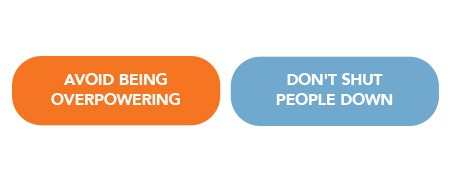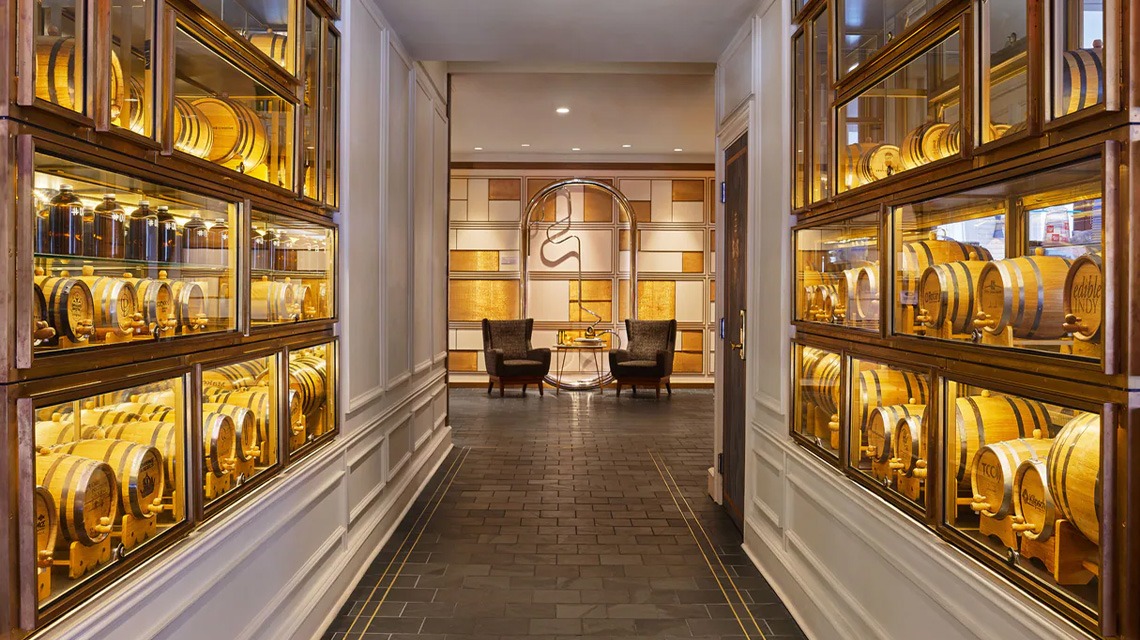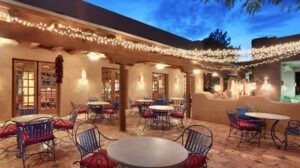Creating honest and genuine exchanges in smaller groups
The idea of trust, whether giving it or getting it is nuanced and complicated. As humans, we are naturally guarded, but still seek connection.
Take that framework and drop it into an intimate, small meeting. You’re in a room with people, possibly strangers, or people you only know passingly. As meeting planners, how do you turn the room from a potential game of poker to an open, honest free flow of thought and feeling conversation?
Smart Meetings sat down with David Lutz, managing director of Velvet Chainsaw Consulting, and Stewart Mann founder, CEO and chief operations officer of Wild Rooster Events, who both have vast knowledge in facilitating groups, to find out what tools meeting planners can unitize to craft a genuine and authentic small meeting experience.
A Foundation of Trust
To illustrate building blocks of trust within individuals, Lutz pointed to Botman’s Trust Stack created by Trust researcher Rachel Botsman, which includes:

Lutz uses ride share organizations like Lyft and Uber as examples of recently established systems of trust within our society. “You wouldn’t think that 10 years ago you would get into a stranger’s car, right? What has to happen to enable you to trust that?” Lutz asks. “People need to just trust the idea or the conversation. They have to trust the platform or the environment that they’re in and they have to trust each other. And if you don’t have one of those—trust erodes.”
Read More: It’s a Small (Meetings) World After All
Small Groups at Small Meetings
A small meeting can mean huge discussions. Lutz recommends creating breakout groups of three or four. If the goal is to make genuine connections and conversations, creating breakout groups can yield solid results.
“People need to just trust the idea or the conversation. They have to trust the platform or the environment that they’re in and they have to trust each other. And if you don’t have one of those—trust erodes.”
– David Lutz, managing director of Velvet Chainsaw Consulting
Developing a bridge of trust between attendees and the facilitators can be even more difficult in a small meeting environment because it is designed to be more intimate. Small groups allow for in-depth conversations if respect can be developed between all parties involved.
“It should be smaller discussions with meaningful work, with people that you feel respect or can grow respect with. If people are just being talked at in a meeting they’re not going to have trust. But if they’re asked for their input and they aren’t judged immediately they’ll hopefully open up. It’s really about creating a safe space for conversations, and in small groups that is really important,” says Lutz.
It is even more important to have a firm grasp of the type of audience you are speaking to.
“[Planners know] their audiences first. Prepare everything you’re doing around the knowledge of that audience. Who they are, where they come from, what their demographic is, what kind of corporation or organization they work for, what their roles are within that corporation or organization,” says Mann, encouraging planners to research the company structure. “What are their core values, what is their mission statement? I try to tie in everything I do back to that those core values and their mission statement, because I feel like that will resonate with them.”
Remember to be Flexible
Whatever plan you have in mind for your small group remember that flexibility is key.
You may have, what you believe, is a solid plan for creating an engaging format for your attendees. But there is always risk of when the rubber meets the road the game plan you had it mind might not work with your group.
The ultimate endgame of a planner is the hope that attendees enter your room and absorb the information you are aiming to provide them.
“I think having the ability to be flexible and having backup upon backup plan is always crucial,” says Mann, “If I start off an event a certain way and I’m not getting the engagement factor that I’m looking for, I’m going to give you a five-minute break to go grab a coffee, go to the bathroom, check an email quick, and just breathe.”
Being considerate of your attendees in this way can show empathy and show that you have a vested interest in their experience, which can ultimately add to the concept of trust between planners and their attendees.
Building Internal Group Trust
Regardless of the degree of established connections within your small group, it is important to establish commonality among those in your group.
Read More: Meetings MBA: Trust Each Other
This may require one or several icebreaker exercises. They can be as simple asking basic questions: Do you like cats? Do you like dogs? Do you have multiple siblings?
“The objective is always to establish commonalities to break down barriers that way and to try to engage them. If you bring humor to the table, making people laugh automatically breaks down those walls, and they feel more comfortable in that environment,” says Mann. “If you provide the means of breaking down their walls or barriers from the beginning of the event, they’re going to be much more prone to opening up and trusting each other. If you engage them in some sort of collaborative activity where they’re tasked with a challenge where they have to achieve a common goal. That’s a surefire way of them beginning that trust the trusting process and opening up.”
Skilled Facilitators
Having a skilled facilitator to lead these discussions helps create a safe space for attendees. Event planners may want to provide a cheat sheet for the facilitator with the names of the people and their roles within their organization.
“If you provide the means of breaking down their walls or barriers from the beginning of the event, they’re going to be much more prone to opening up and trusting each other.”
– Stewart Mann, founder, CEO and chief operations officer of Wild Rooster
“You got to start somewhere,” says Lutz. “You want to get to know the people that you’re participating with on some personal level like having a facilitator that can make sure everybody knows each other.”
Facilitators should keep in mind the elements of things they should sheer the conversation away from such as:

Instances like these could cause attendees to shut down or disengage from a conversation, ultimately losing whatever trust was gained up until that point.
Setting Attendee Expectations
Acknowledging and setting expectations are important for both facilitator and attendees.
“I try not to come across as overly professionals. My approach is more like—I’m one of you. We’re all the same. We’re all human and we’re all here to achieve a common goal,” says Mann. “Just because I happen to be the person who has the microphone, I am not better or smarter than anybody in the room. We are all the same and we’re all here together to have a good time, to have some positive takeaways from these events, and to establish a common goal that we all hopefully will achieve throughout the duration of the event.”
A facilitator with a solid set of ground rules to avoid things like tangents or moments of oversharing will help vastly improve the likelihood of trust within the small group dynamic.
It will also be helpful when progressing with your small group, by setting the tone that engagement is required from them at the start of the event, so they are aware of the participation expected of them.
Great Places to do Small Meetings
In search of the perfect place to host your next small meeting? Check out these great choices for your next small but mighty meeting.
Indiana

Looking for places to host your next small meeting? If you’re in Hamilton County, Indiana, there are plenty of options. Hilton Garden Inn Indianapolis/Carmel offers three meeting rooms. Its Meridian Pennsylvania Room is 1,250 sq. ft. and can be split into Meridian Room and Pennsylvania Room, both are 625 sq. ft.
Residence Inn Indianapolis Carmel offers the option of an extended stay with full kitchens in guest suites, as well as a free grocery delivery service. Residence Inn offers 690 sq. ft. with a capacity of 40. The venue also offers AV equipment including an overhead projector, teleconferencing, and wired and wireless internet.
The Holiday Inn Express & Suites Carmel North – Westfield sits north of Indianapolis in the Carmel Arts and Design District. The hotel offers 800 sq. ft. of meeting space and two meeting rooms. The largest room holds a capacity of 54 people.
The Le Méridien Indianapolis is located near Indiana Convention Center and has 3,396 sq. ft. of event space, six event rooms. The largest space has the capacity to host 75 guests.
Courtyard by Marriott Plainfield is located 5 miles from the Indianapolis International Airport (IND). The venue offers 2,729 sq. ft. of event space, four event rooms. The largest space can host 90 individuals.
New Mexico

Off to Albuquerque? No problem. Homewood Suites by Hilton Albuquerque Uptown is off I-40 and a quick five-minute walk to Coronado Mall, it is also 10 minutes from Albuquerque Racetrack. The hotel has five meeting rooms that totals 1,851 sq. ft. of event space, the largest room is 432 sq. ft.
Located only 5 miles from the Albuquerque International Sunport (ABQ), Historic Banque Building Event Center offers 8,000 sq. ft. of event space and can host up to 150 guests. The venue contains a rooftop deck with an expansive wet bar with a catering kitchen and bathroom facilities.
Read More: Notes from the Road: Albuquerque, New Mexico
Harwood Art Center is located near downtown Albuquerque. It offers a dining hall of 1,700 sq. ft., along with a theater capacity of 100 and banquet capacity of 100. The venue also offers adult art classes, summer art camp and various exhibitions.
Courtyard Albuquerque offers 3,202 sq. ft. of event space, four event rooms and four breakout rooms. The largest space has a capacity of 200 people. The hotel also has AV equipment for planners including a PA system, wireless internet, an on-site certified meeting planner and decorator.
Hilton Garden Inn Albuquerque Uptown is within walking distance of ABQ Uptown, Winrock Town Center and Coronado Center. The hotel offers 2,200 sq. ft. of event space, along with three meeting rooms.
Arizona

Looking for a venue with a ranch theme? Check out Rancho de los Caballeros in Arizona! Here, planners have 9,000 sq. ft. of combined meeting space, complimentary Wi-Fi access, a full catering service and a slew of team-building activities such as horseback riding and roping lessons.
AC Phoenix Biltmore is a boutique hotel found in the heart of the Biltmore area. The hotel offers 5,010 sq. ft. of event space, four event rooms and three breakout rooms. Nearby attractions include Camelback Mountain, Chase Field and Old Town Scottsdale.
This article appears in the January/February 2024 issue. You can subscribe to the magazine here.




